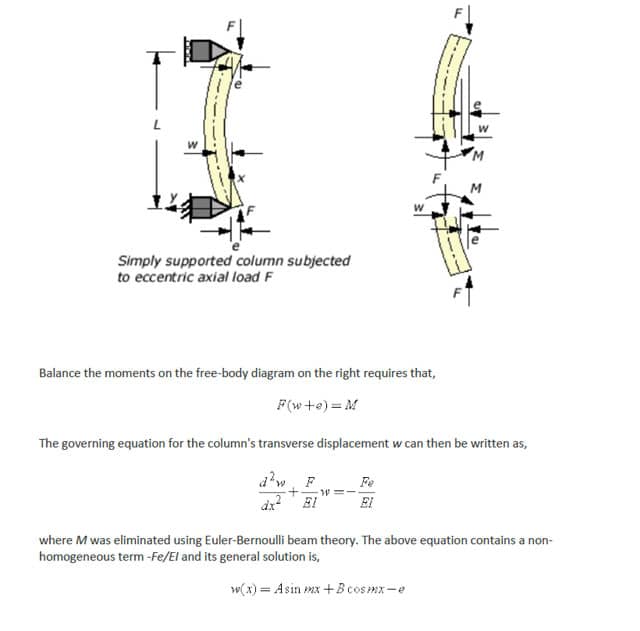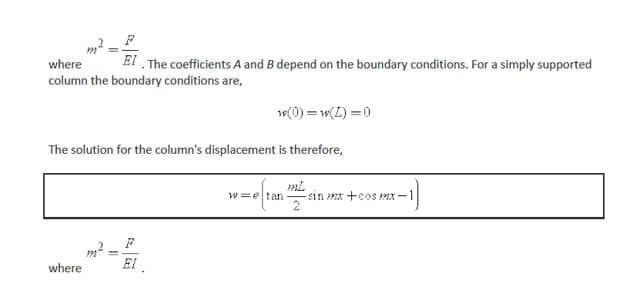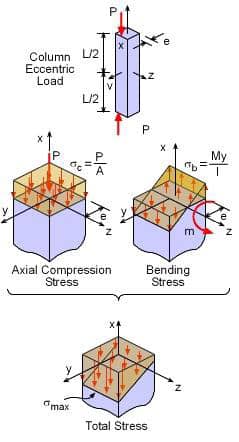How to make the design of a eccentrically loaded column in excel

Eccentric loading means when point of action of load or weight is away from the neutral axis of columns. In practical sense when loads are acting such that they are not balancing each other it is called eccentric loading and it causes a structure to fail.
A normal load whose line of action does not intersect the centreline of a beam is eccentric. The eccentricity is equal to the distance from the centre line of the column and the line of action of the load. The column will be subject to a torsion equal to the magnitude of the load times the eccentricity. Practically many columns are restrained by the secondary structure and the torsion goes in it.

Eccentric Axial Load
Column under an axial load, the column remains straight until the critical load is reached. However, the load is not always applied at the centroid of the cross section, as is assumed in Euler buckling theory. This section analyses a simply-supported column under an eccentric axial load. Consider a column of length L subject to an axial force F. On one end of the column, the force F is applied a distance e from the central column axis, as shown in the schematic below.


Maximum stress
Eccentric Loaded Column Stress
Unlike basic column buckling, eccentric loaded columns bend and must withstand both bending stresses and axial compression stresses. This can be illustrated by looking at both these stresses separately. The axial load P, will produce a compression stress P/A. Since the load P is not at the center, it will cause a bending stress My/I. The maximum compression stress will be total of both these stress, giving

Again, remember, tan, sin and cos, are radians not degrees. Also, L is for a pin-pin column. For other column boundary conditions, can be used.
There is a lot of terms in the secant formula that may be confusing. The first issue is to understand what is unknown. Generally, the load P is not known for a given column, material type, and maximum allowable stress, smax. One might ask, if P is the unknown, why is the equation not formulated with P on one side of the equation? The problem is P cannot be isolated on one side of the question since this is a nonlinear equation. Thus P cannot be solved using algebra but a numerical method is needed such as a root finder or even trial and error.

